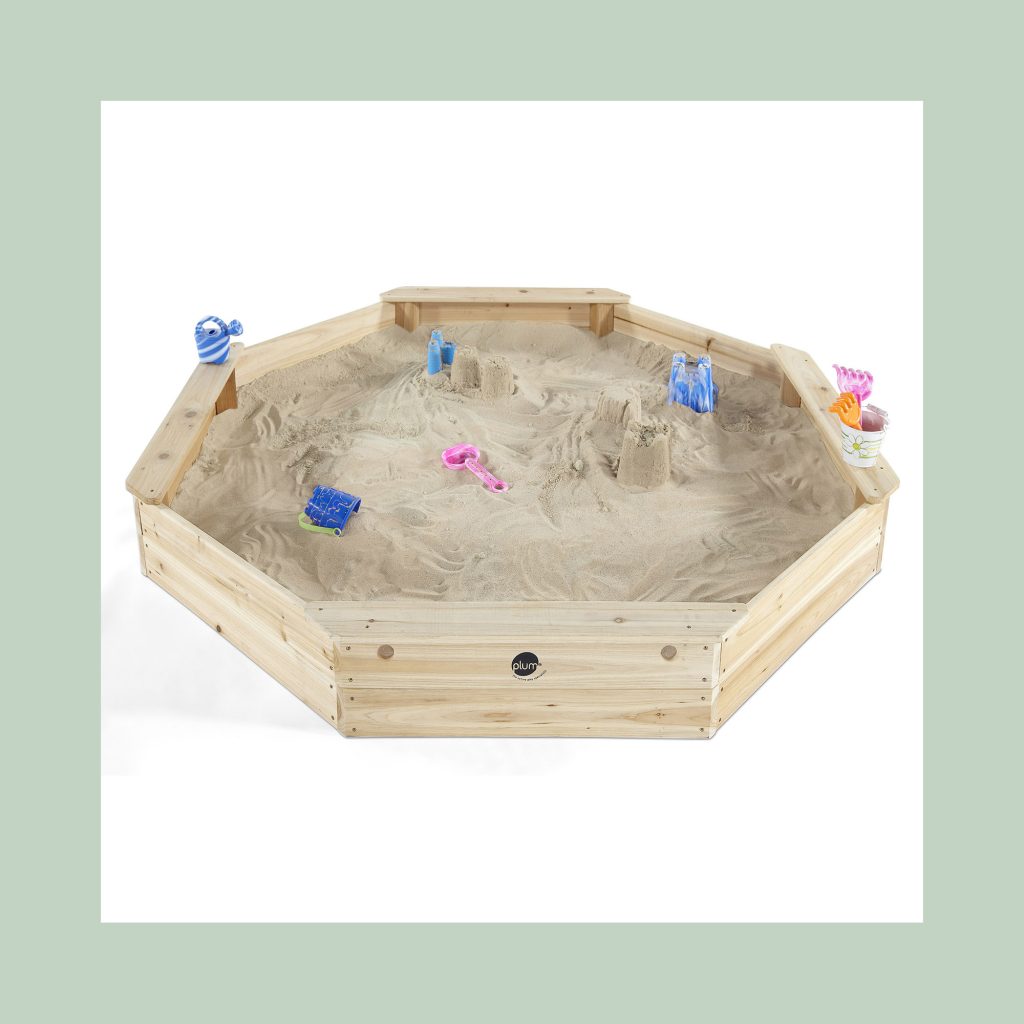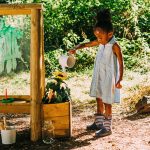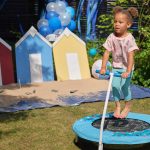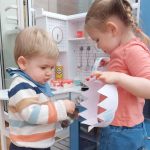
A sand and water table or a sandpit provide the perfect way to bring a little bit of the beach into your garden. They are also a great way to get your little ones outside and have fun now that the weather is getting warmer. Whether your little ones imagine they have gone for a day to the seaside or are looking for buried treasure, sand and water play activities provide lots of opportunities for your little ones to experience sensory play.
Sensory play is a way of engaging your child’s senses whilst they play and this can help them learn and develop as they have new sensory experiences, such as exploring new textures, sounds and sights.
Playing with sand is a fun way for your children to learn and can have lots of benefits. Some of the benefits include improving motor skills, improving social skills, and learning about aspects of science and numeracy.
Playing with water is another engaging way for your little ones to learn. Some benefits of water play include enabling children to make discoveries, improving concentration, and igniting their imagination.
Summer is just around the corner and so, now is the perfect time to try out some sand and water play activities at home and bring the beach to your garden.
Keep reading to discover some fun sand and water play activities that you can try with your little ones.
1. Make Sand Mud Pies
Making sand mud pies is a fun way to allow little ones to explore through sensory play. Making sand mud pies is easy and entertaining. All you need is sand, water, a bowl, and a spoon. Then, let children explore as they mix up sand and water together to make their sand mud pie. Children can experience the feeling of the sand squishing between their hands as they mush, mix, and mould their sand mud pie creations. Perhaps they might add some seashells into the mix too or they might go on a nature hunt and forage in the garden for inspiration. When the sand mud pie is complete, they can decorate it with seashells or maybe even draw shapes and patterns on top to add the finishing touches to their creations.

2. Letter Hunt
Going on a letter hunt in the sandpit is a fun way to incorporate literacy and learning into play.
To create your letter hunt, simply hide some foam or wooden alphabet letters by burying them in the sandpit. Next, encourage your little ones to use their hands and sandpit tools to dig and search for the letters.
This is a great way to get children familiar with the letters of the alphabet and there are lots of different ways to do this sand play activity. Maybe children can search for all the letters in their name or find all the vowels? Children could find letters to spell out certain words and then practice writing them out themselves by using their fingers like a pencil in the sand to copy the letters.
The Store-It Wooden Sandpit would provide a great area to conduct a letter hunt. The sandpit is big enough to hide alphabet letters but has a small enough footprint, so it’s suitable even for smaller gardens. This sandpit also comes with storage space for storing toys too. So, once the letter hunt is over, letters, buckets and spades can all be packed into the neat storage compartment for another day. Covering the storage compartment with the colourful lid converts it into a wooden bench too.
To add more variation, you could bury shapes or numbers instead. So, little ones can learn numeracy whilst playing in the sandpit.


3. Create an Ocean Sensory Pool
Creating an ocean sensory pool or sensory bin can be beneficial to your child’s development. Sensory bins can encourage children to explore their environment in a tactile way, improve their fine motor skills and possibly increase their attention span. This is because the freedom of playing with sensory bins has the potential to engage your little one’s attention for longer than structured tasks.
To create your very own ocean sensory bin you can begin with a water table or sandpit.
The Surfside Wooden Sand and Water Picnic Table is ideal, as it provides the option for both sand and water experiences, all in one. Plus, once playtime is over you can simply pop the sturdy wooden lid on top and this transforms the sand and water activity table into a picnic bench, which children can then use to eat outdoors.
Using your activity table, you can put some sandpit toys into the sand and add some driftwood and some seashells too. Then into the water play table area, you could add some toy sea creatures, like crabs and fish and maybe some pebbles too. You could even add some bubble bath to create soapy suds for your child to explore.
Why not use a fishing net to encourage little ones to develop their fine motor skills and scoop out their rock pool finds at the same time?
4. Sink or Float Experiment
An outdoor water play activity can be a good way to encourage children to learn about science and numeracy through play. A fun way to do this is through the sink or float experiment.
Simply gather some objects, such as bath toys, rocks, leaves and sandpit tools. Encourage children to place them in the water one by one, do they sink, or do they float? How about if you drop them in from higher up, rather than placing them in carefully, does this change how they sink or float? How many objects sink and how many float? This simple physics experiment can encourage children to make scientific predictions and observations and learn about the buoyancy of objects in the water.

5. Evaporating Water Art
Bring out your child’s inner artist with some fun evaporating water art activities in the garden.
All that’s needed is some water and a surface that your children can use as a canvas to create their masterpieces. A suitable surface can be something like a patio, a bedsheet, or a wall.
Next, allow your children to express their creativity through their evaporating art. They can dip their hands into the water and then use the water on their hands to create a masterpiece on their canvas. As it is created with water, the ‘painting’ will dry quickly and evaporate. Meaning that children can have fun trying out lots of different designs over and over again. The creative tools are almost limitless too. Children could use lots of things, like paintbrushes or sponges, feathers, or grass to help them paint their pictures. The best part is because the artworks are created with water and dry away in the sun, there is little setup, mess and clean-up required with this kids’ outdoor water play activity.

These are just a few of the many sand and water play activities that your little ones can try out this summer.
Find out more about Plum Play sandpits here.
Find out more about Plum Play activity tables here.






